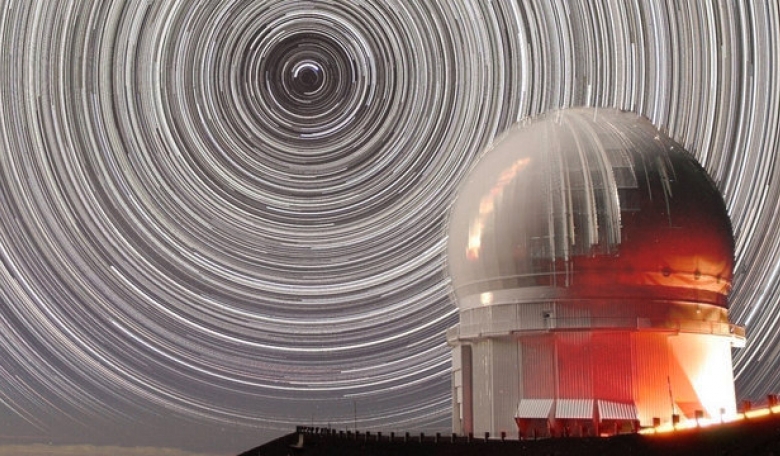The closer the asteroid came to Earth, the wider the swath of sky astronomers would have to search to find it. And for a team atop Hawaii’s tallest mountain, mid-July marked the first chance to observe the asteroid in question, likely 30 m wide, since its discovery in 2006. A 10-day glimpse of its trajectory, back then, suggested that it could be on a collision course with Earth. An outside possibility: it could get here as soon as this year.
As of this summer, the asteroid (named 2006 QV89) is finally close enough to observe again. After so long, however, the astronomers in Hawaii had only a rough idea of where to look. Assuming they could find it in the sky, they wanted a better estimate of its orbit – and its likelihood of hitting Earth.
Then just a day after the search began at the Maunakea Observatories on 14 July, a crowd of protesters blocked access to the site in hopes of stopping construction of the planned Thirty Meter Telescope there. Operations at the existing telescopes had to stop too.
In doing so humans almost sacrificed one safety net for another. The protesters want to protect the mountain, sacred in native Hawaiian culture, from becoming the site of an 18-story-tall telescope. The scientists working there now, meanwhile, want to protect Earth from otherworldly threats.
In terms of asteroid 2006 QV89, the worst-case scenario was a collision with Earth this September, estimated at a 1-in-7,000 chance. Shortly after the start of the protest, observers at the Very Large Telescope array in Chile ruled out that possibility – not by finding the asteroid itself but by looking at the place in the sky where it would have been, had it been coming to Earth in 2019, and not finding it there.
Regaining access to the Canada-France-Hawaii Telescope at Maunakea, however, remained crucial.
“The area of the sky was just so large, and the object so faint, that very, very few facilities around the world are capable of even attempting to tackle the problem,” said David Tholen, astronomer at the University of Hawaii’s Institute for Astronomy, in an interview for ROOM.
In that single night of observations at Maunakea, however, the astronomers had identified about 12 asteroids that fit the profile of 2006 QV89. Without access to the telescopes in Hawaii, Tholen alerted a colleague at the European Space Agency – Marco Micheli, who was also responsible for ruling out the 2019 strike – but with two hours’ access to a telescope in Spain to try to verify the find, the likeliest candidate proved too faint to make out.
As the weeks wore on, a collision in 2020 remained a possibility – along with eight other possible strikes in the coming decade and nearly two dozen total in the next 100 years, according to the University of Hawaii’s Institute for Astronomy.
The asteroid got closer and closer – easier to see but harder to find. “That made the use of a large telescope with a wide-field camera absolutely essential,” Tholen said in a statement by the institute.
Protesters continued to block the Maunakea access road on 11 August but staff had begun going around the blockade, and astronomy resumed. Tholen’s team trained 55 of the Canada-France-Hawaii Telescope’s visible-light detectors on their top target.
“Despite some thin cirrus clouds and a lot of moonlight, we needed only four minutes of data to obtain proof that we had found the right object,” Tholen said.
Scientists can only estimate the size of 2006 QV89 at 20 to 50 m in diameter. Tholen thinks it’s 30 m, “give or take”. By comparison, scientists think the asteroid that created Meteor Crater in the US state of Arizona was 40 to 50 km in diameter.
Shortly after confirmation of 2006 QV89, the Center for Near Earth Object Studies at the NASA-funded Jet Propulsion Laboratory in California announced what everyone wanted to hear: the asteroid won’t be hitting Earth anytime in the next 100 years.
At its closest approach this September, 2006 QV89 will pass within 7 million km of Earth. We know that now, but that number might have been zero, Tholen points out.
Meanwhile during the protest, the Maunakea astronomers never got to nail down the path of another asteroid they’ve had on their (rhetorical) radar, also with a chance of hitting home.
“It’s smaller. It likely would burn up in the atmosphere. It’s not a super big concern,” Tholen says. But it’s a concern.











